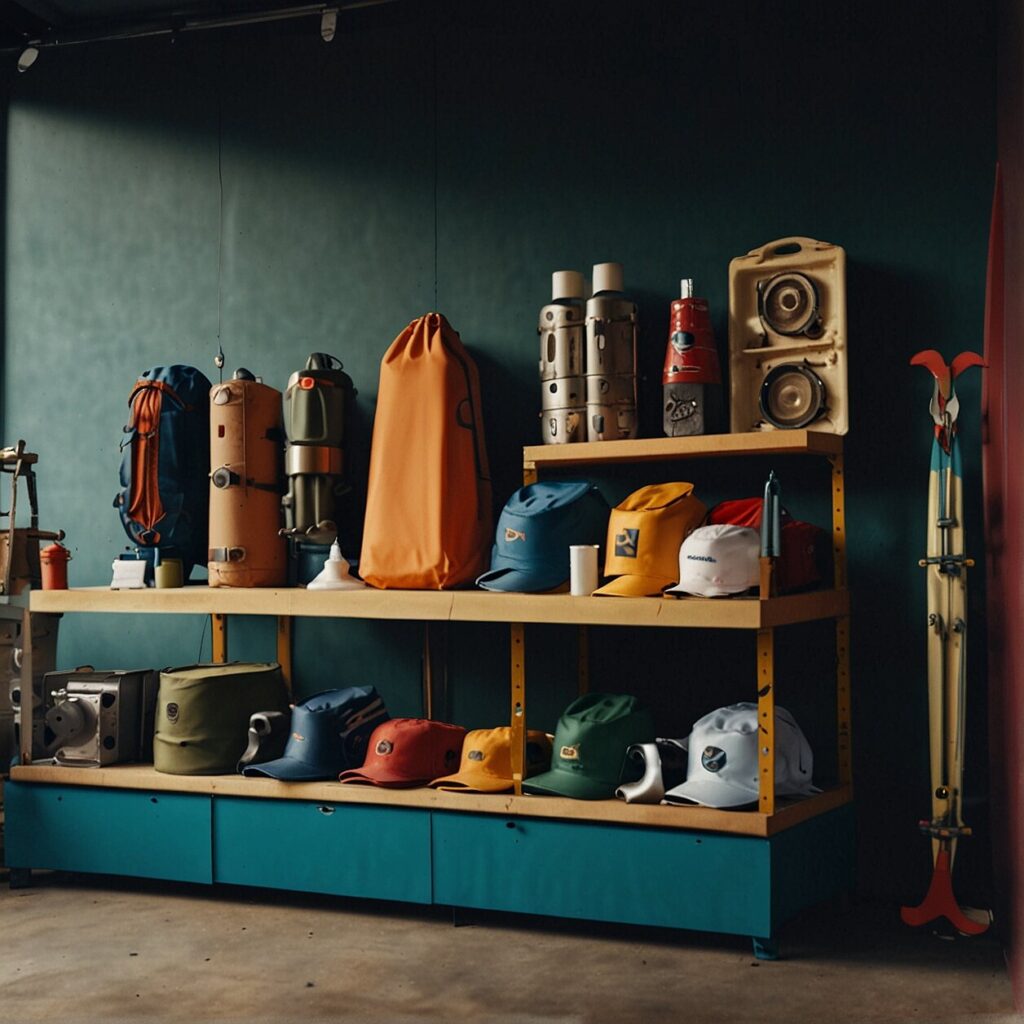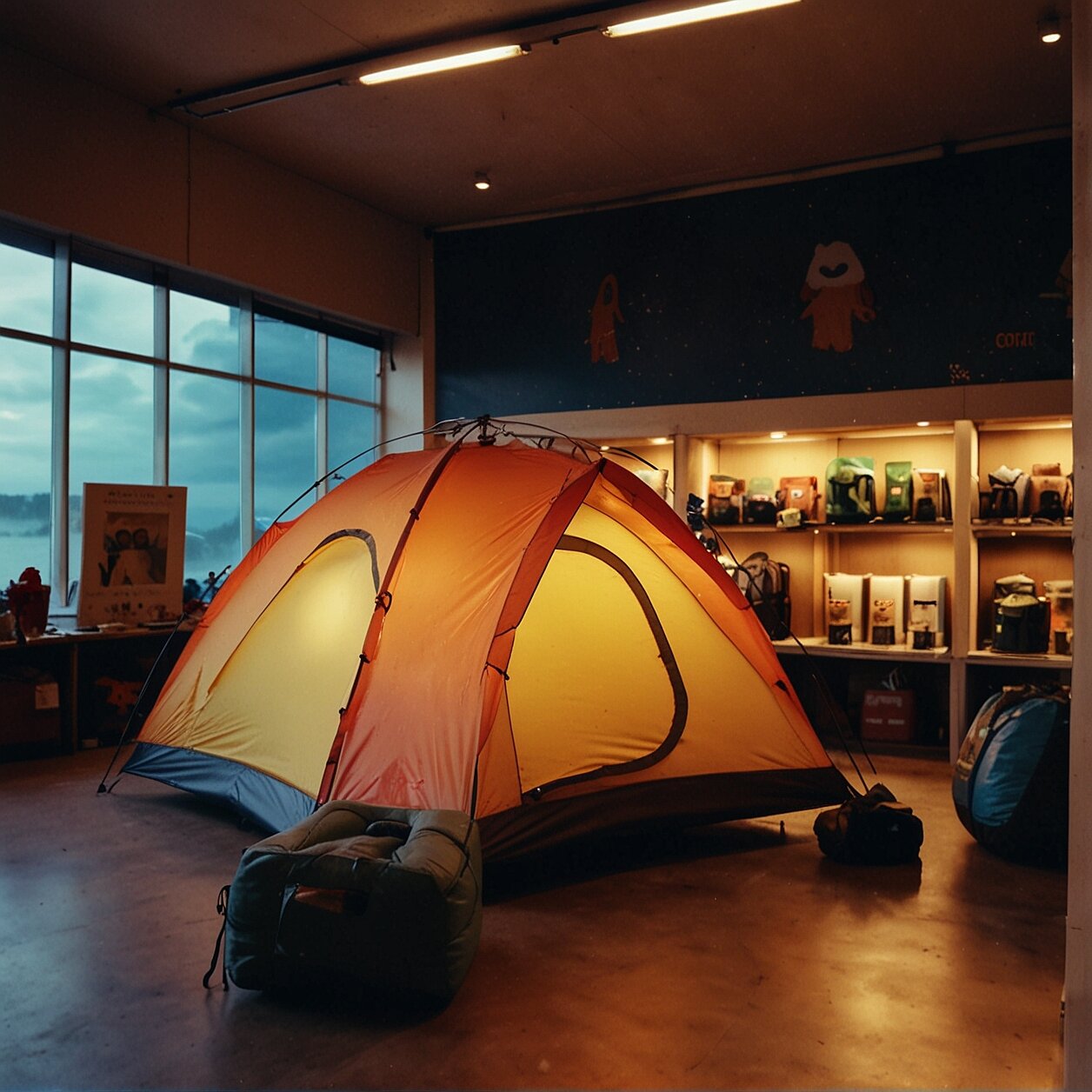Adventure Retail Shopping: Tips and Tricks for Navigating REI and Other Outfitters
Shopping at adventure retail stores can sometimes feel like an adventure in itself. With racks upon racks of gear, the endless shelves of accessories, and the vast selection of outdoor clothing, it’s easy to get lost in the ocean of exciting products. But just like any great adventure, a successful shopping expedition at these stores also requires a bit of strategic planning, some insider knowledge, and a keen eye. If you’ve ever felt overwhelmed while shopping at an adventure retail store or wanted to ensure you’re making the most out of your shopping trips, you’re in the right place. This article is your personal guide to navigating these stores and ensuring you walk away with the perfect adventure gear, every single time.
“Shopping at an adventure retail store is much like planning for an adventure itself – requiring strategic planning, insider knowledge, and a keen eye.”
- Stunning adventures deserve the right gear
- Expedition to retail should be a joy, not a struggle
- This guide uncovers the secrets of shopping effectively at adventure retail stores
Decoding the Adventure Retail Store Layout
Now, let’s delve into the real-world application of these ideas for your shopping excursions. We’re going to walk you – virtually, of course – through a typical adventure retail store layout, so you can navigate it like a seasoned pro, while getting the best value for your money.
Firstly, don’t overlook the storefront – it’s often an understated treasure trove. With changes in consumer behavior, many adventure retail stores are incorporating experiential retail. This involves setting up eye-catching pop-up shops, interactive displays, and small themed environments right at the entrance to entice customers, add novelty, and elevate the shopping experience. These areas are designed to generate excitement and are often stocked with the latest products or markdown items. So remember, running past these could mean missing out on some great deals!
Once you step into the store, pay attention to the signboards – they are your best friends. They guide you to the correct aisles, helping save time and energy. Major gear categories like climbing, camping, hiking, etc., are generally spread across various sections of the store. It may seem sprawling at first, but this layout is meant to inspire exploration and discovery – similar to an adventure outdoors.
Finally, in the age where digital and physical shopping blend seamlessly, many stores have added digital maps, QR codes or apps to help shoppers navigate. This not only enhances the immediacy with which you can locate items but also elevates your expedition in-store, making it a real adventure. So don’t hesitate to pull out your smartphone and dive into the digital assistance available.
In summary, understanding an adventure retail store layout is all about embracing the unknown and finding joy in the discovery process. Happy shopping!
Essential Gear: What to Look for in Adventure Stores
From sturdy hiking boots to lightweight sleeping bags, the variety at adventure stores is wide. The trick to winning at the gear game lies not only in knowing what you need but also in being able to discern quality and suitability. So, how do you pivot from an overwhelmed customer to a savvy shopper? Let’s dive in.
The first rule of thumb is to align your purchases with your adventure goals. If you’re set for a strenuous hike, invest in a durable pair of hiking boots and breathable clothing. For those ready to brave a camping night under the stars, a good quality sleeping bag and a portable tent should top your shopping list. Recognizing the specificity of your adventure needs gets you halfway through a successful shopping experience.
Next, consider doing a little homework. A brief research session on top adventure gear brands can set you in the right direction. Look for reviews and ratings online to narrow down your choices. This will ensure you aren’t blindsided by the first shiny gear on the aisle.
An additional tip from Mitch Mode, a renowned outdoor retailer, suggests tuning into the experience of the store staff. The knowledge they possess about different gear, their up-to-date training, and their genuine love for the outdoors contributes significantly to the shopping experience. Don’t hesitate to ask questions or seek advice on the best equipment for your adventure.
Finally, keep an eye out for local flavor. Stores like the Clark Store in Clark, Colorado, offer trail maps and local knowledge. This can be an unrivaled resource when planning your next adventure. Not only will you come away with quality gear, but also with valuable insight into the local terrain from an insider’s perspective.
In conclusion, shopping at adventure retail stores requires a blend of personal preparation and exploration of what the stores offer. By doing your homework, aligning your purchases with your adventure goals, and leveraging local knowledge, you can ensure your next shopping session is a fruitful one, gearing you up effectively for your next adventure.

Behind the Scenes: Unspoken Rules of Adventure Retail
As you traverse the exciting landscape of adventure retail, knowing the unspoken rules can be a game-changer. Firstly, don’t be afraid to ask questions. Every piece of gear in an adventure store has a purpose. Understanding this can be crucial to enhancing your trip’s safety and enjoyment. Leveraging relationships with the store representatives can provide you with valuable insights and options that you might not have considered.
Smooth your buying journey with a team, if possible. Having a second or third set of eyes can spell the difference between snagging the perfect accessory for your adventure or missing out entirely. These varying perspectives can enhance your shopping experience, helping you to make more informed decisions about your purchases.
An adventure retail store is also a great place for learning. It’s where you can decode the utilitarian nuances of the gear, learn about the latest entrants, get camping tips, or even become part of a fascinating community who shares your love for the outdoors.
Store layouts are strategically designed to lead you on an exciting journey through potential adventures. Embracing the unknown and allowing the maze of equipment, outfits, and tools to create excitement can truly enhance your shopping experience.
The worlds of digital and physical adventure shopping often blend seamlessly. Maximizing on this integration can prove beneficial. Be on the lookout for online promotions that lead to in-store savings, or ask in-store personnel about digital benefits you can avail.
When shopping, remember that adventure retail stores are more than just outlets for camping and hiking gear. These stores are portals to experiences, aiming to facilitate a deeper connection with the great outdoors. As such, the consumer preferences for experiential and immersive retail models are reshaping the way we shop at adventure stores.
So, when you embark on your next shopping trip, enter with knowledge, an open mind, and the spirit of curiosity. Allow the store layout to guide your adventure, indulge in the shopping experience, and remember that each aisle navigated and each gear discovered is a part of your bigger escapade awaiting outside the store.
REI Shopping: A Comprehensive Guide
Enter REI – an adventure retail store that stands as a beacon for all outdoor enthusiasts. From kayaking to hiking, from leisurely strolls to intense mountain biking trips, REI has it all. But, how do you navigate this vast expanse of adventure product offerings? Let’s delve into some insider REI tips to ensure you capture the best deals and discover exactly what you need.
Firstly, make your visit to REI an experience rather than a transaction. This retail pioneer emphasizes inclusivity. On starting their roles, all staff experience diversity and inclusion training, making it a welcoming space for open and honest discussions. Embrace this openness to seek product advice without hesitation and shop with a purpose. Remember, the REI staff are there to help you make informed choices, not just to sell you a product.
When gearing up for your next adventure, cost is always a driving factor and the membership program at REI is a great way to save money. From camp stoves to climbing gear, REI memberships can provide substantial savings, which accumulate over time. Furthermore, the REI Garage Sale events are insider-only experiences offering fantastic bargains on returned, slightly used or slightly damaged merchandise. This is REI’s way of avoiding unnecessary wastage, bolstering their commitment to the environment, and offering you high-quality gear at a fraction of the cost.
The world may be increasingly shifting to online retail, but REI continues to champion the importance of in-store experiences. This is where the blend of physical and digital retailing shines. Embrace the unknown, and don’t be afraid to test products and gear onsite before you make a purchase. This will give you a better understanding of the product’s full potential against your needs. Remember, an online review can tell you a lot, but a hands-on experience will reveal the authenticity of a product far more accurately.
With the rise of experiential retail, REI is pivoting to immersive physical experiences as well. You’ll not just find racks of gear and equipment. You’ll also discover an adventure-themed playground, a place to play with the gear, test your climbing skills, or just learn about a new hobby. This is in direct response to your demands for experiences over mere transactions, a shaping consumer preference especially among millennials and Gen Z.
In conclusion, shopping at REI is about more than just equipping yourself with gear for your next adventure. It’s about embracing the ever-evolving world of adventure retail, understanding the value of both physical and online retail experiences, and enjoying the shopping journey as much as the actual adventure. Do your research, ask questions, engage with the products and above all, enjoy the exploration!

Adventure Shopping Checklists: From REI to Your Local Outfitter
When you decide to venture into an adventure retail store, be it REI or your local outfitter, having a strategy can make your shopping experience much more efficient. Let’s dive into some essential points for your checklist.
First and foremost, equip yourself with knowledge about the specific gear you need. Familiarize yourself with the brands and the pros and cons of each. This simple preparation can make your shopping trip much more fruitful and less overwhelming. Do some quick research online, compare price points, read user reviews, and understand the specific features you need for your adventure.
Remember to take your time when choosing the right gear. High-quality adventure gear is an investment, and rushing through the purchasing process may lead you to make impulsive decisions you might regret later. Focus on the gear’s comfort and safety features, and don’t forget to consider durability and reliability as well.
It’s also helpful to note the store’s customer service and assistance. Staff in such stores are usually experienced adventurers themselves, eager to share their expertise. Don’t hesitate to ask them for advice or clarifications. Having a personal interaction with someone who has hands-on experience with the gear can be incredibly beneficial.
Another essential point to remember is inclusivity and diversity. Many adventure retail stores are now focused on ensuring their staff reflects the local community. Don’t be surprised if you find a diverse team ready to assist you. They’re trained to avoid any assumptions about customers based on appearance or background, which makes the shopping experience more personal and comfortable for everyone.
Lastly, keep an eye out for additional resources many stores offer. Some local shops, like the Clark Store in Colorado, go above and beyond by providing trail maps and local area knowledge, which could prove tremendously helpful for your adventure.
So there you have it! A handy checklist for your next adventure shopping spree. Intricate preparation and a systematic approach can turn your shopping trip into an adventure itself!
FAQ’S
As we delve deeper into the wonderful world of adventure retail shopping, we understand that you may have a plethora of questions. When’s the best hour to snag that discounted tent? How can you ensure the gear you’re investing in is top-notch? What’s more beneficial for you – online shopping or walking into a brick-and-mortar store? It’s perfectly normal to have these queries and more. That’s why we’ve painstakingly curated this FAQ subsection—to help address these frequently asked questions and empower you to shop confidently as you gear up for your next big adventure. So, without further ado, let’s dive right into your most pressing questions!
What are the best times to shop at adventure retail stores?
The best times to shop at adventure retail stores largely depend on what you’re looking for. For the most part, weekday mornings tend to be less crowded, allowing for more personalized attention from store associates. However, if your primary goal is to save money, consider shopping during major sale periods like Black Friday, Boxing Day, or during end-of-season clearances. Keep in mind, sizes and styles can be limited during these periods due to high demand.
Furthermore, if you’re interested in the experiential aspects of adventure retail, such as ropes courses or zip-lining, weekends often bring an increased number of demonstrations, hands-on experiences, and other unique events. Make sure to check the store’s online schedule or contact them directly to stay updated on their planned activities.
Whether you decide to visit on a busy weekend or a quiet weekday, remember, the goal is to create an enjoyable shopping experience that caters to your adventure needs. Balance the benefits of seeing the gear in person, trying out experiential aspects, and receiving personalized help, with potential savings found during major sale periods. Happy shopping!
What should I look for when shopping at adventure retail stores?
When shopping at adventure retail stores, there are several factors to consider to make your shopping experience truly rewarding. Remember, you’re gearing up for an adventure, and thus your focus should be on getting the most suitable gear that provides comfort, safety, and durability.
Firstly, consider the activity or adventure you’re planning. Every adventure sport or activity has specific gear requirements. A trip to the Alps requires different gear than a snorkeling adventure in the Caribbean. It’s essential to make a list of necessary items related to your specific adventure to ensure you don’t miss anything.
Another point to consider is your level of expertise in the activity. If you’re new to rock climbing, for example, think about investing in beginner-friendly gear, which often has additional safety features. In contrast, adept climbers might opt for more professional-grade equipment.
Quality is paramount when shopping for adventure gear. Research brands that are known for their durability and reliability within your activity. Read reviews, ask for store expert opinions and even consult your adventure buddies to make informed decisions. However, be aware that high prices don’t always mean higher quality.
Lastly, make sure to inquire about after-sales services and warranties that come with your purchase. Adventure gear can have a hefty price tag, so it’s essential to safeguard your investment through warranties and services offered by the retailers.
In conclusion, when shopping for adventure gear, it’s not just the price that matters. Consider your adventure type, expertise level, gear quality, and after-sales service to get the best gear that will stand by you in your thrilling expeditions.
How can I find the best quality gear at adventure retail stores?
Finding the best quality gear at adventure retail stores is like going on a treasure hunt — there’s a thrill in the pursuit, and the prize is worth the effort. Here are some effective strategies to help you succeed.
Firstly, look out for top brands in the adventure retail industry. Brands such as Patagonia, The North Face, and Columbia have built their reputation on providing high-quality, reliable gear. Product reviews can be a great help too. They give you insights into the performance and durability of a product from people who’ve used it in the field.
Secondly, adventure retailers sometimes introduce experiential retail models to their stores. These setups let you test the gear in situations that mimic real-life conditions. Take advantage of these opportunities. Load the backpack with weight to check its comfort, or try on the hiking boots on an incline to assess their grip.
If you’re shopping in a popular adventure-focused tourist area, stores like The Clark Store in Colorado go one step ahead. They offer trail maps and invaluable local knowledge that you can use to select gear that is most suitable for your adventure.
Lastly, engage with the staff. They usually reflect the local community’s adventure interests, and they could offer you helpful information, benefiting from their first-hand experience.
Quality adventure gear is a worthwhile investment, and with these tips, you’ll be well-equipped to select the best the adventure retail industry has to offer.
How can I stay updated on sales and promotions at adventure retail stores?
Staying updated on sales and promotions at adventure retail stores is all about strategy – it’s knowing where to look, who to follow, and what platforms to utilize for the best store deals and discounts.
First, let’s start with social media. Follow your favourite adventure retail stores on platforms like Instagram, Facebook, and Twitter. Retailers often post photos and videos about ongoing events, store discounts, and new product arrivals on these platforms. These digital platforms offer a great way to be the first to know about sales, new gear, and discounts.
Another smart move is subscribing to the store’s newsletters. These emails will often include information about upcoming sales, exclusive deals for newsletter subscribers, and in some cases, personalized product recommendations.
Joining local tourism groups is also a fantastic way to get ahead of sales. If your adventure retail store is based in a tourist spot, they will likely promote their products and deals in those groups, making you one of the first to get your hands on discounted gear.
Lastly, closer ties to your favourite stores should not be ignored. Building a relationship with the store you frequent will keep you on their radar. On your next visit, ask the associates about any upcoming promotions. After all, communication is key. Don’t hesitate to get to know the associates – they appreciate your business and may even share some secret sales with their favourite customers!
Remember, it’s crucial to always stay relevant and keep up with trends. Whether it’s in-store or online, the world of retail is ever-evolving, so a keen sense of adaptability will always serve you well. Happy shopping!
What are the pros and cons of shopping online vs in-store at adventure retail stores?
At first glance, buying adventure gear online may seem incredibly convenient. You have the whole world of adventure retail at your fingertips, and you can shop at any time, from any location. Not to mention the joy of exploring a wide range of products without having to leave the comfort of your home.
Online shopping also allows for easy price comparison. Many websites aggregate prices from different vendors, allowing you to ensure you’re getting the best possible deal. Besides, you can read reviews from other customers, which can be a valuable resource when deciding on a purchase.
However, there are certain drawbacks to online shopping. Firstly, you miss out on the physical experience. You can’t touch, feel, or try on the gear before buying, making it difficult to judge the quality and fit. Secondly, you have to wait for delivery, which can be frustrating if you need the gear urgently. Plus, there can be additional shipping costs.
Shopping in-store, on the other hand, provides a tangible, immersive experience. It allows you to try on equipment, feel the weight of a backpack, or gauge the comfort of hiking boots. Direct interaction with knowledgeable shop staff is another key advantage. They can provide useful advice, helpful tips, and answer any queries you may have.
Experiential retail strategies enhance this in-store shopping experience even further. Adventure retail stores are now incorporating adventure activities into the shopping experience, with ropes courses, ziplines, and adventure playgrounds. This not only attracts visitors but also gives a practical preview of how the gear performs in real-life situations.
The downside? Prices might be higher due to overhead expenses, and you may have less variety to choose from compared to online stores. Plus, shopping in-store can be more time-consuming.
Both online and in-store shopping at adventure retail stores have their pros and cons. The best choice depends on your personal preferences, your need for assistance or advice, and how quickly you need your gear.







